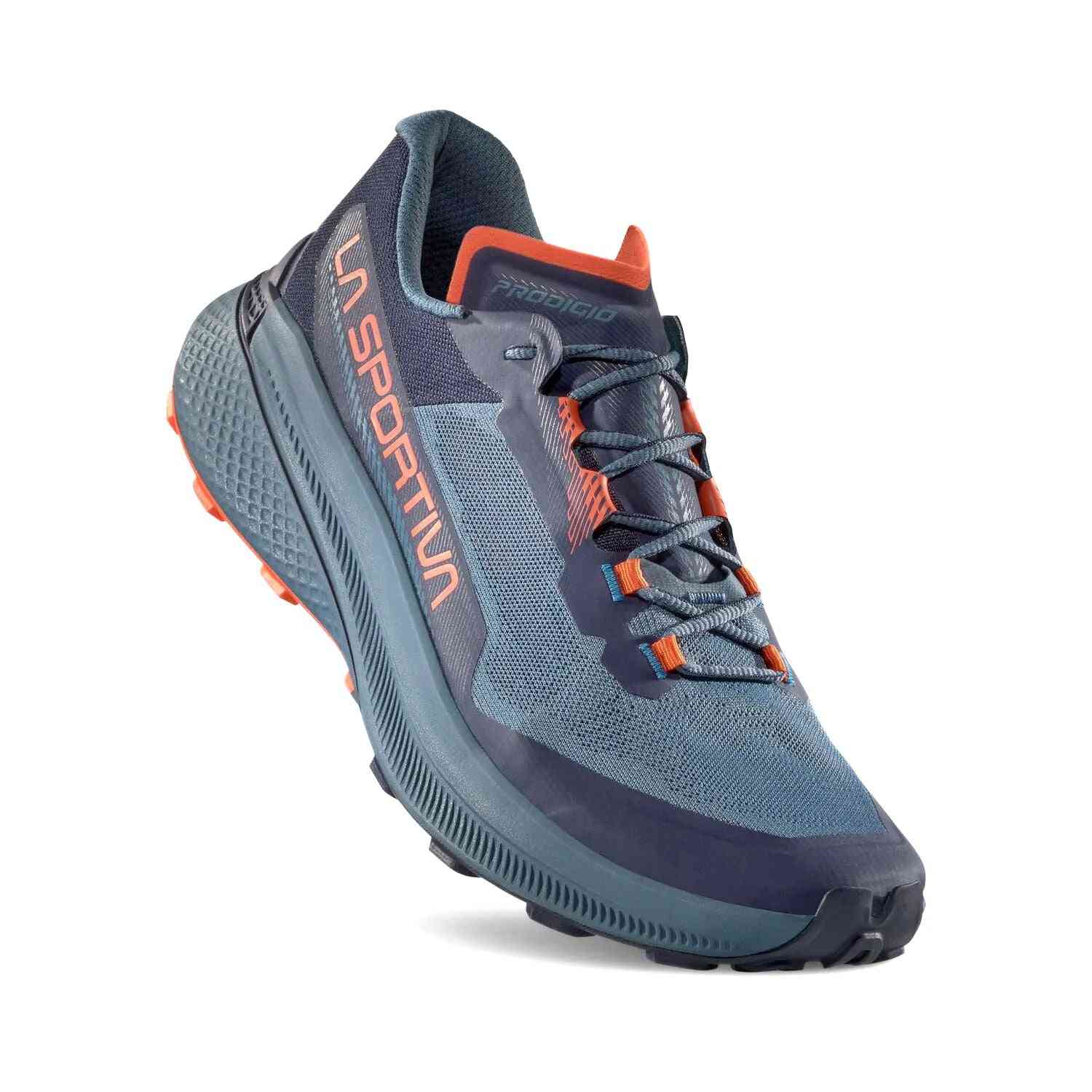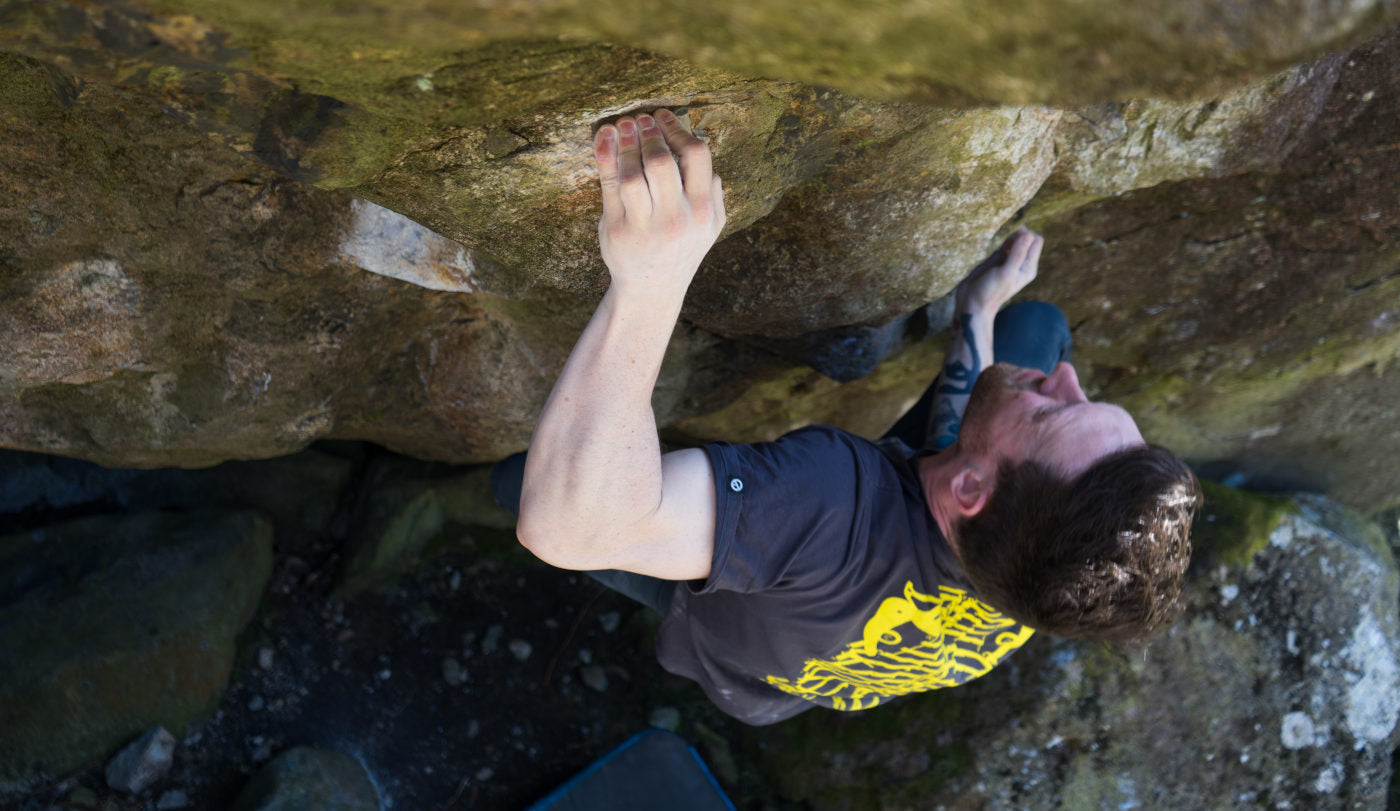By Neil Gresham
We all know that the best training for climbing is climbing, but for those long rainy evenings when you can't face the indoor wall, or for those quick lunch-break workouts, a fingerboard session may provide the next best thing. Fingerboards can be used to develop specific strength, power and endurance for climbing, and your wall or crag sessions can then be used to convert these gains into climbing terms.
Which board?
With regards to what type you choose, there are so many purpose-built resin and wooden fingerboards on the market you should have no problems finding a well priced board with a range of holds. Whilst some of these seem to be somewhat over-designed for what is essentially a simple job, most will do the job. Home made wooden boards are often just as effective and they can be made easily with minimal cost - a strip of 18mm ply drilled and T-nutted. T-Nut adjustability enables versatility and and adaptability, and a combination of wooden and resin holds in the best mix. If your fingerboard has no large jugs then it can be used in combination with a pull-up bar for pure arm work.
Fingerboard Training Explained
A fingerboard can be used for a wide range of highly worthwhile training exercises which can be split into two basic categories: Isolation exercises (which train the fingers and arms separately) or Synergistic exercises (which train both arms and fingers in combination). However, the most important concept to draw into all aspects of fingerboard training is that of varying the resistance of training in order to conform to a target number of repetitions for a given exercise. This does not just mean using different sized holds. To decrease the resistance you can use a bungee stirrup or small foothold positioned in such a way as to allow marginal assistance. To increase the resistance, the safest way is to use a weight belt (for 2 arm work) or carry a weight in your free hand (for 1arm work)
1) Finger isolation training Deadhanging
 A deadhang is simply a straight armed isometric (static) finger hang performed on a specific hold for a set time duration. At all costs, Deadhanging should not be used for long endurance sets as this places repetitive strain on the finger joints and may cause chronic injury. It is best to mimic the common finger contraction pattern in climbing as accurately as possible, either by performing shorter sets for strength or intermittent hangs with alternate arms for endurance. This will ensure maximum specificity to climbing and that the fingers are released before they are overstrained. If you are new to deadhanging it will be a virtual necessity to perform exercises with two arms. However, as you progress it is always better to switch to 1arm work on larger holds which offer better support for the all important first finger joints, rather than being tempted to use dangerously small and painful holds with 2 arms. The only time when 2arm work is worthwhile for stronger climbers is for experimenting with combinations of 1 or 2 fingers on each hand.
A deadhang is simply a straight armed isometric (static) finger hang performed on a specific hold for a set time duration. At all costs, Deadhanging should not be used for long endurance sets as this places repetitive strain on the finger joints and may cause chronic injury. It is best to mimic the common finger contraction pattern in climbing as accurately as possible, either by performing shorter sets for strength or intermittent hangs with alternate arms for endurance. This will ensure maximum specificity to climbing and that the fingers are released before they are overstrained. If you are new to deadhanging it will be a virtual necessity to perform exercises with two arms. However, as you progress it is always better to switch to 1arm work on larger holds which offer better support for the all important first finger joints, rather than being tempted to use dangerously small and painful holds with 2 arms. The only time when 2arm work is worthwhile for stronger climbers is for experimenting with combinations of 1 or 2 fingers on each hand.
Training tips
Session structure
The recommended guideline for the duration of each hang is between 3 and 12 seconds (with 6 - 8 seconds representing the optimum). However, the most convenient approach is simply to take one hold, which you can hang for 3 - 4 seconds and work with this same hold over a number of sessions until you can hang it for 12 seconds. Once you have managed this then start again with a new and slightly smaller hold that you can only hang for 3 - 4 seconds, and so on. Alternatively, to ensure an appropriate progression of intensity throughout a single deadhanging session, a pyramid structure can be applied. Simply start off with the shortest 2 - 3 second hangs on a small hold and then move on to larger holds, increasing the hanging times accordingly.Rest and sets
Rest periods between deadhanging sets should be sufficient to enable you to make quality attempts. For the 'alternate arm' work, this would probably mean at least 4 - 6 minutes between sets, and for the single contractions, 2 - 4 minutes. If anything, do less rather than more as it is always best to stop when you still feel strong' rather than allowing your performance to drop significantly. This will enable you to recover more quickly between sessions.
1) Vary your grip
Deadhanging should be used to train the full range of finger isometric angles although most climbers tend to favour a half-crimped position, simply because it is the safest way to hang on edges. Go steady with full-crimped and open-handed work and a good combination is to do 2 sets of half-crimp to 1 of crimp and 1 of open-hand. The modern approach to 'openhanded' training is to use carefully designed and well-rounded edges (or campus rungs) as opposed to pockets.
'Train not strain'
 Although deadhanging is ideal for working weak fingers, it is not recommended to complete beginners. Deadhanging is intensive by definition and general climbing will provide a far better means of developing a base level of finger strength. Even those who are already quite strong should remember that deadhanging is best used as a supplementary exercise to bouldering so don't get carried away! A good combination is to alternate between fingerboard sessions and bouldering sessions.
Although deadhanging is ideal for working weak fingers, it is not recommended to complete beginners. Deadhanging is intensive by definition and general climbing will provide a far better means of developing a base level of finger strength. Even those who are already quite strong should remember that deadhanging is best used as a supplementary exercise to bouldering so don't get carried away! A good combination is to alternate between fingerboard sessions and bouldering sessions.
2) Arm isolation training All arm exercises for climbing can be performed either on the largest 'jug' holds on your fingerboard or on a pull-up bar so as to minimise the loading on the fingers.
- i) Concentric pull-ups These are simply pullups (with palms facing away) performed with appropriate assistance or resistance in order to conform to the repetition guidelines for strength work (ie: 1 - 8 reps) or endurance work (ie: 10 and upwards). Stronger climbers will need to perform 1 arm work in order to keep the reps down whereas others may need to use both arms or even a bungey cord or foothold for assistance. Use a pyramid repetition structure, starting off with 1rep max work (after doing 3 or 4 warm-up sets) with maximum resistance and working through to finish with 8 rep work. Try experimenting faster 'power reps' with a lower resistance, or Partial reps to isolate the lower, middle or upper part of the pulling movement, depending on your area of weaknesses.
- ii) Negatives (eccentric movements) This superb system shocking exercise is essentially a pullup in reverse. The idea with negatives is that you are unable to resist the eccentric force and hence, having started in a fully locked position, you have no option but to lower yourself downwards, whilst fighting to make your descent as slow as possible. So clearly, to make a negative movement effective, the eccentric load must be greater than the climber's maximum static locking strength.
- iii) Isometric work ('Lock-offs') These are static locks which are performed on a large hold (with either 1 arm or 2 depending on ability) and which are designed to build relevant isometric arm strength. It is advisable to train at a minimum of three different arm angles to prevent an imbalance in strength from occurring. These are: Full-lock, 90 degrees and 120 degrees. Hang for between 2 and 12 seconds using exactly the same rep and set structure that is given for deadhanging.
- iv) Supersets For a highly intensive training effect it is possible to combine all three of the above exercises in a form of ‘superset’. For example, a set of concentric pulls is performed with three static locks on the negative part of the movement. After failure on the last positive rep, the set is continued with use of a bungee stirrup to enable negatives to be performed to a point of secondary failure. Needless to say, go carefully with these!
- v) Traveling pull-ups A worthwhile and perhaps more climbing specific variation on the standard 2 arm pull-up is simply to raise your chin to each hand alternately at the top of each pull-up and to lock it in as deeply as possible. You can also try traveling from side to side at the top part of the movement without going down. This exercise is ideal for concentrating on the upper range of motion and preventing your strong arm from carrying your weaker arm, which so often occurs with standard pull-ups.
- vi) Body tension work You can use the jugs for performing leg raises or front levers for body tension / core stability. Note that this is a particularly important aspect of strength training for climbing which so often gets overlooked. Keep your arms straight, raise your legs as high as possible and keep them as straight as you can. Don’t swing and maintain control. Twist to the sides for variation and to work the oblique muscles.
Sample Fingerboard Session: For Strength & Power
1) Fingertip Pull-ups On flat first-joint edge - rest 3 - 4 mins between sets 3 x warm-up sets 2 - 4 reps x 4 sets (flat, first-joint edge) (Do 2 sets half-crimped, 1 crimped & 1 open-handed) 6 - 8 reps x 2 sets (slightly larger flat edge)
2) Six-move Fingerboard Problems Warm-up sets (do individual moves, with bungee or foothold if necessary) 3 repeats / attempts (rest 3 - 4 mins between each)
3) Pull-ups on Jugs (combine with isometric locks) rest 3 - 4 mins between sets 2 - 4 reps x 3 (max resistance ie: weighted or 1arm) 6 - 8 reps x 2
4) Traveling Pull-ups 3 sets of 8 – 12 (3 - 4 mins rest)
5) Deadhangs (1arm or two depending on ability) rest 3 - 4 mins between sets Half-crimp 4 - 12 secs x 4 (each hand) Half-crimp 4 - 12 secs x 2 (each hand) Sloper 4 - 12 secs x 2 (each hand) Open hand ,, ,, x 2 (each hand)
6) Hanging Leg Raises 3 – 5 sets of 12 reps (see guidelines above)
WARMDOWN (Stretch + light pull-ups with assistance from feet)















